Ajax are undoubtedly the greatest selling club in world football. The Dutch giants constantly churn out potential world-class talents, sell them on for massive money to the top five leagues and then replace them with ease, either from the academy or from the club’s wonderful scouting network.
Last summer, having won the Eredivisie once more under the guidance of Erik ten Hag, Ajax underwent open heart surgery to the entire first team, losing 13 squad players as well as the manager and his assistant while recouping £200 million in transfer fees.
Key members such as Antony, Lisandro Martínez, Ryan Gravenberch and Sebastien Haller all parted ways, leaving big boots to fill within the starting lineup. Incoming head coach Alfred Schreuder had an immense job on his hands to plug the void left by the outgoing ten Hag too.
However, thus far, the former Club Brugge manager has handled the task admirably. Ajax are playing scintillating football and the new gaffer has replaced the summer exits through internal promotion or signings in the transfer window. Exciting talents such as Mohammed Kudus, Steven Bergwijn, Kenneth Taylor and Calvin Bassey fall under these two categories.
Sitting joint-top of the league so far, let’s take a look at the tactics deployed by the new head coach. This tactical analysis piece will be a team scout report of Ajax early into the 2022/23 campaign.
Preferred formation
Schreuder has proven to be a very astute appointment so far for Edwin van der Sar’s Ajax, but it seemed a little peculiar when first announced.
Granted, Schreuder was a former assistant coach at the club when ten Hag was in the dugout but the Dutchman’s previous history as a manager has been questionable at times.
Even last season, when Schreuder impressed in Belgium by winning the Belgian Pro League with Club Brugge despite Royal Union St. Gilloise leading the race for the vast majority of the season, the champions did so by switching between a 3-5-2, a 3-4-2-1 and a 3-4-1-2 formation.
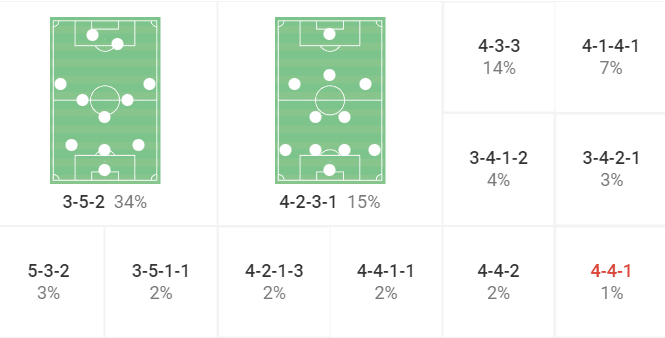
Bear in mind that Schreuder took over mid-way through the season and Club Brugge had primarily deployed a 4-3-3 and a 4-2-3-1 until the Dutch coach was brought in but the eventual league winners found their rhythm within the 3-5-2 and other back three variations.
Many speculated whether or not Schreuder would take this structure from Brugge to Amsterdam with him and go for a complete overhaul of Ajax’s tactical set-up.
In ten Hag’s final campaign with the European giants, the tactician only really played with a 4-3-3 and a 4-2-3-1, rarely switching from these two conventional systems unless the team were down to ten men.
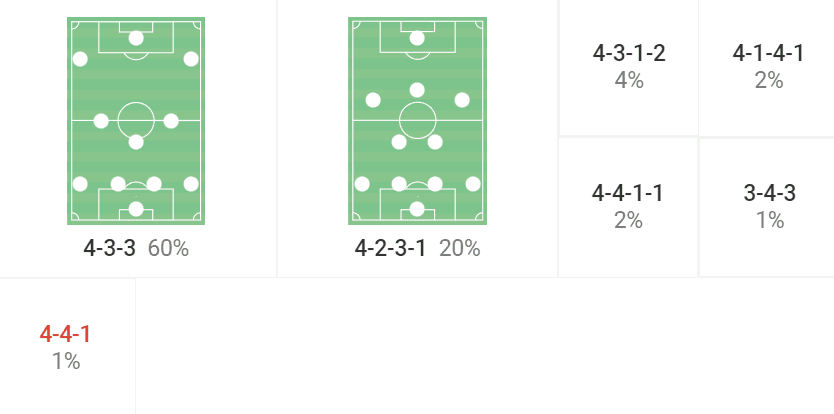
Despite such an overhaul with the playing staff, Schreuder saw no reason to change the set structure and fluidity of the side that was left to him by his predecessor.
So far this season, the new boss has maintained Ajax’s use of the 4-3-3 and the 4-2-3-1 in 82 percent of the team’s matches.
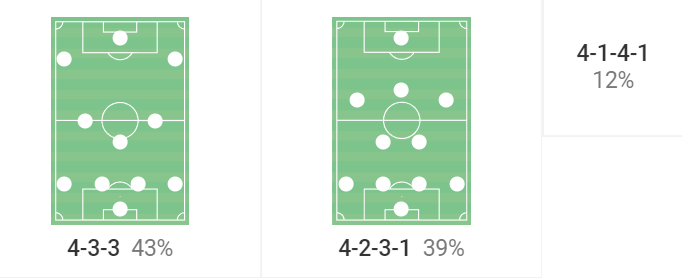
But as is becoming more and more apparent in the modern game, formations are merely a way of quantifying a team’s defensive structure on the pitch. In-possession systems have become so complex and fluid that trying to label them into formations is no longer applicable, and Ajax are as fluid as they come.
Let’s take a deep dive into how Schreuder has made the Dutch giants the most free-flowing team in Europe.
Rotations beyond the first line of pressure
One of the key tactical principles hammered home by Schreuder is having plenty of positional rotations behind the opponent’s first line of pressure.
Often, when bypassing an opponent’s high press, teams will build out through the wide areas, using combination play. If you can’t play through, play around. But Schreuder doesn’t adhere to this blueprint and instead wants his men to pass it through the central spaces which means finding a way to get in behind the opposition’s first line of pressure.
To do this, Ajax constantly rotate players in the space behind the first line of pressure. Normally in the side’s 4-3-3, Edson Álvarez begins as the number ‘6’ in this area but regularly vacates the pivot space to allow others to drop in to receive.
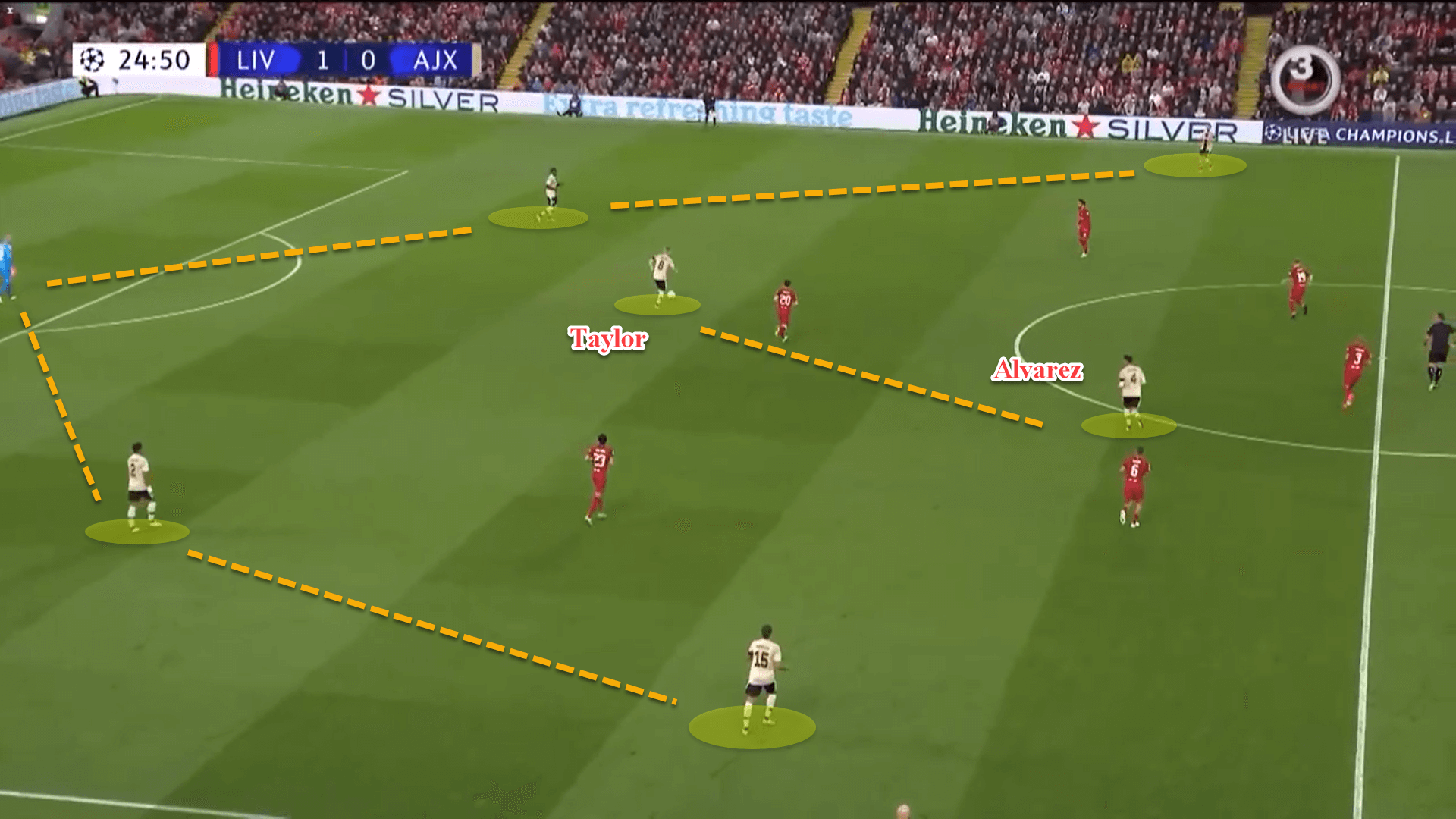
Here is a fascinating example of Ajax’s positional interchanges in this space of the pitch. Originally, Álvarez was operating in his regular area behind Liverpool’s front three whilst the centre-backs were positioned wide, and Kenneth Taylor was helping to circulate the ball in front of them.
As Liverpool stepped up to press, Taylor moved wide to receive, the two centre-backs both pushed up to the space behind the home team’s first line of pressure, while Álvarez became the deepest outfield player for the visitors.
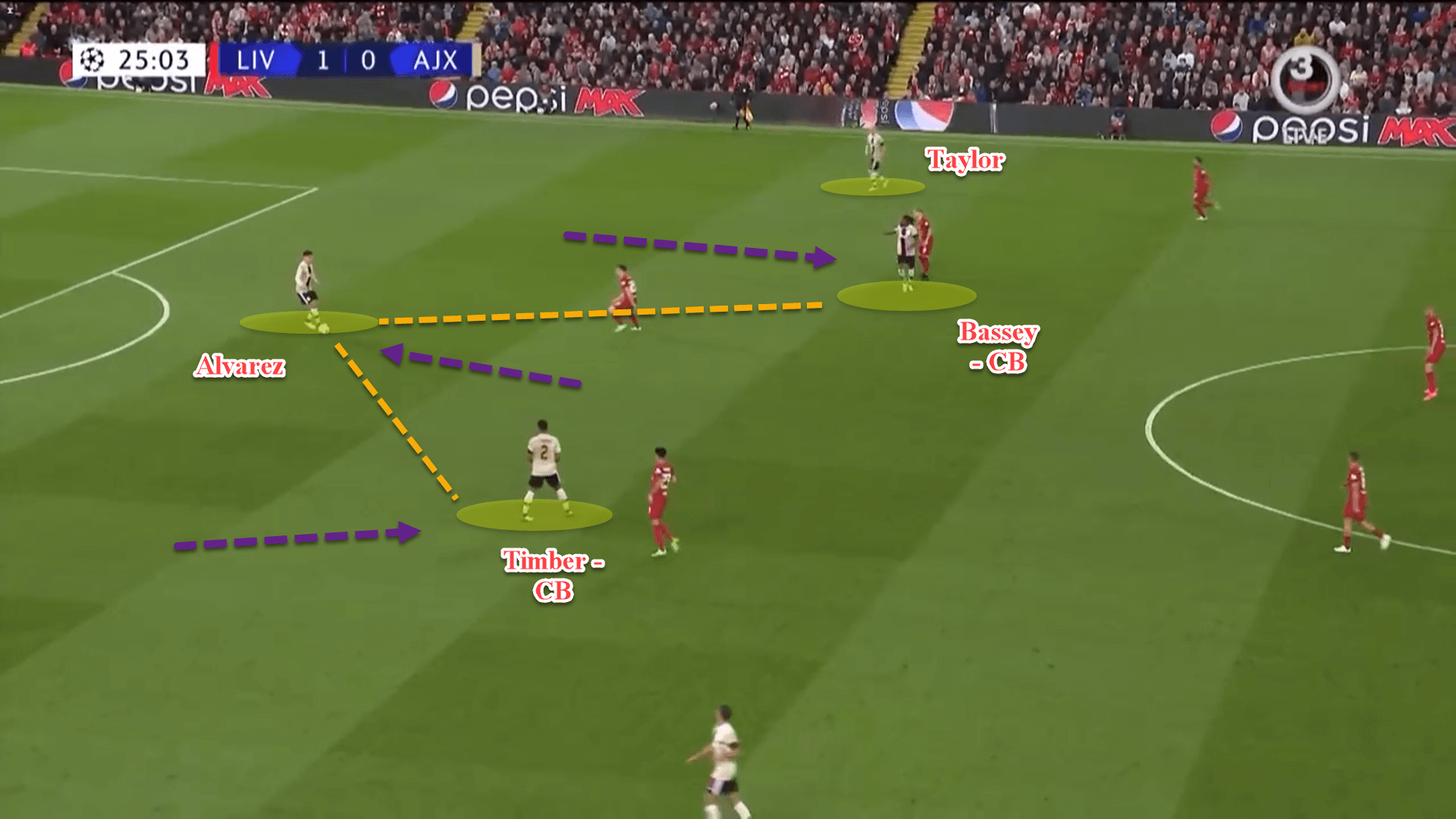
The idea of these rotations is that Ajax are always disorientating the opponent’s initial defensive line, making it extremely difficult for the other side to press and block passing lanes in behind because there is persistent movement in this space.
If Álvarez remained in this area, it would be pretty simple for the frontmen to press Ajax’s centre-backs by simply curving their pressure to block off the passing lanes into him.
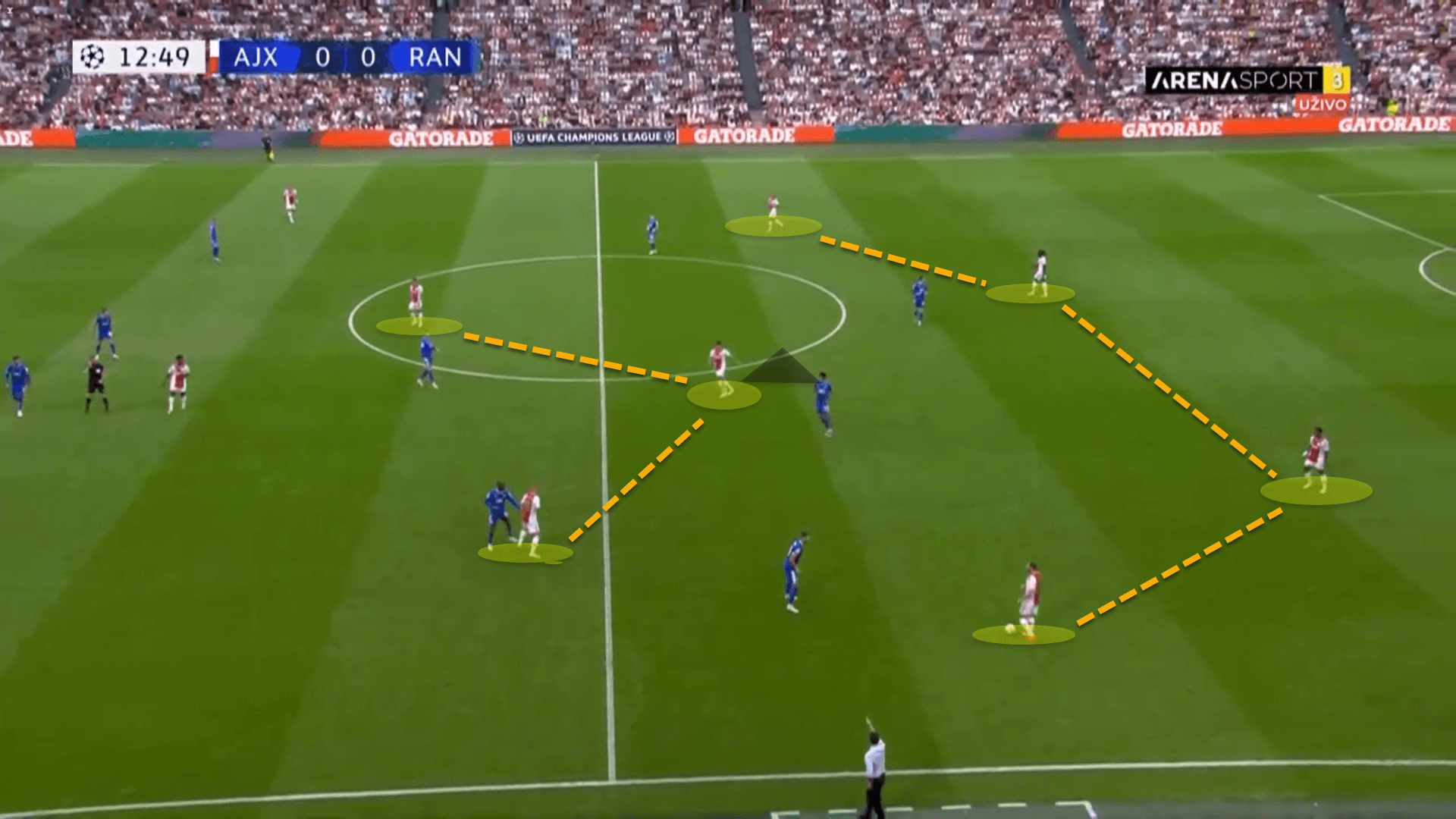
Look at this example. Rangers are pressing Ajax in a mid-block while the latter are structured in quite a basic 4-3-3. The Scottish side are easily able to cut off passing lanes into the space behind the forward line, preventing the ball from reaching Álvarez.
At risk of sounding like a parrot, the positional rotations between the centre-backs and midfield are very efficient in creating passing angles for Ajax to progress the ball behind the opposition’s forward line.
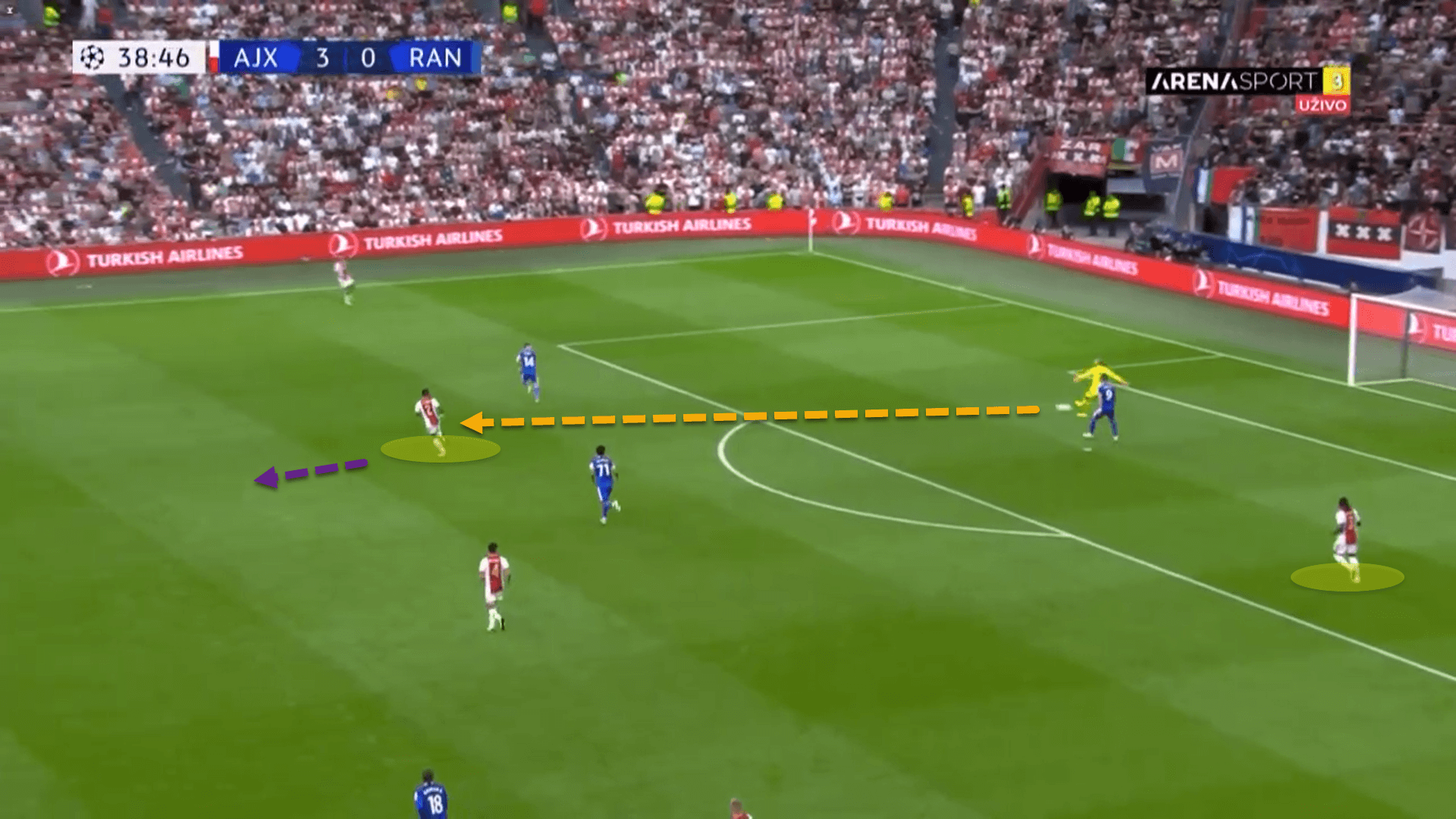
Again, here, Ajax played a backward pass to the goalkeeper which triggered Rangers to spring forward to press in their high block.
Recognising the angle of Rangers’ pressing, Jurriën Timber moves behind the first line of pressure to receive the ball on the half-turn from Ajax’s goalkeeper, breaking through the press with ease.
From Ajax’s progressive passing map against Rangers, we can see just how influential and important these rotations are to the team’s build-up play.
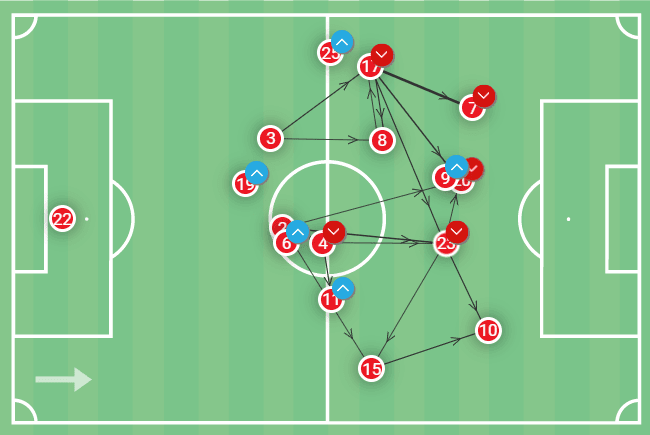
From all 120 progressive passes made by Schreuder’s team, quite a lot came from Timber, Álvarez and Calvin Bassey at the back.
Ajax even scored a wonderful goal against the Gers from this fluid build-up play in their UEFA Champions League opener which was polished off by Mohammed Kudus in the end.
The Eredivisie champions formed a 3-1 base with Álvarez dropping beside Timber as a right centre-back. Bassey then pushed up higher to receive the ball in space before playing straight to the feet of Kudus.
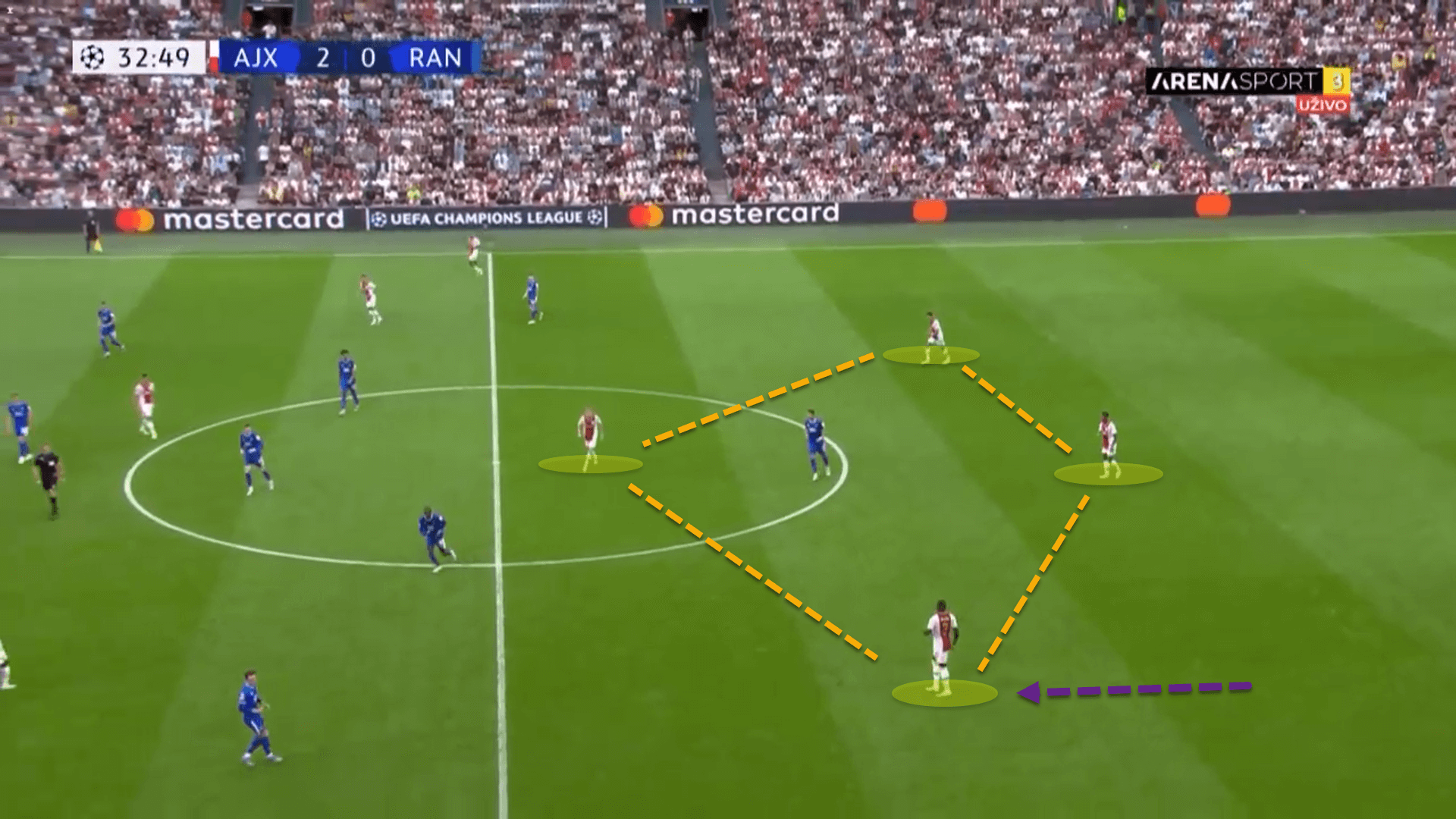
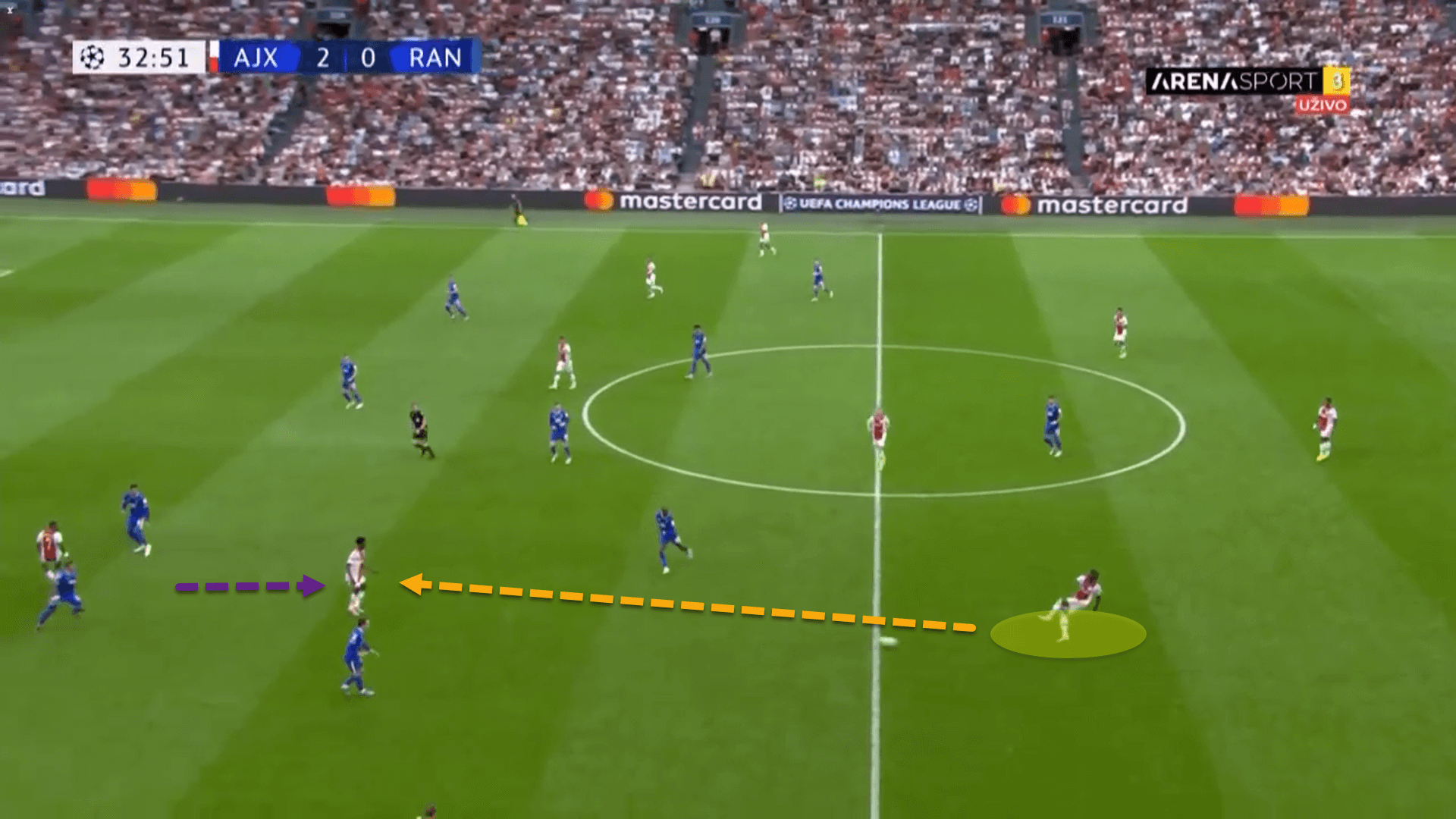
The nippy Ghanian turned his man upon reception of the ball, exploded into space and eventually smashed it home.
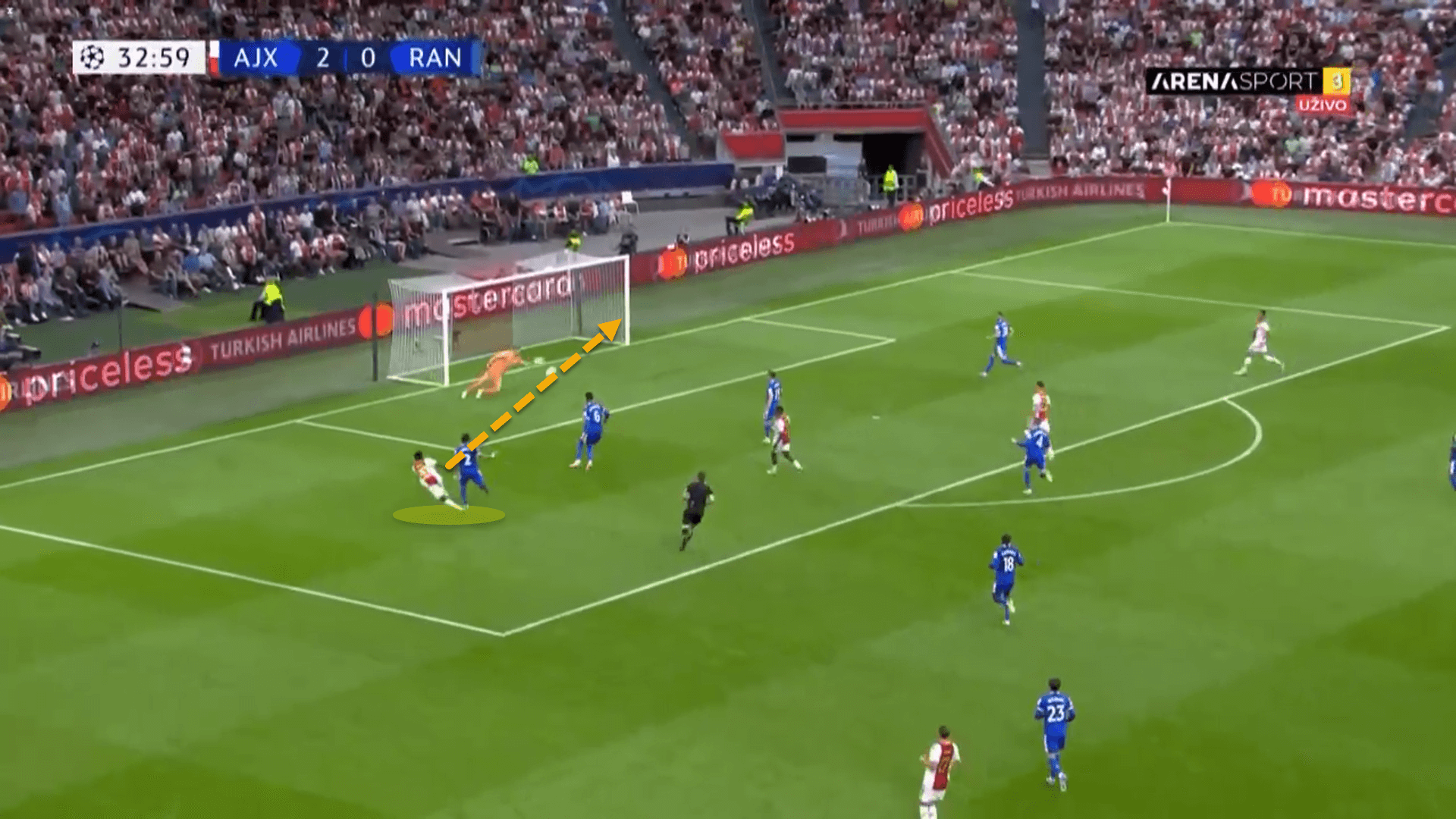
All of this came from incredibly intelligent and well-rehearsed movements from the centre-backs and midfielders who are always looking for ways to remain defensively balanced at the back in case of a turnover of the ball while also creating progressive passing angles behind the opponent’s first line of pressure.
When innovation makes love with pragmatism, football is in its very purist form.
Overloads between the lines
Once Ajax have squirmed their way through an opponent’s press, Schreuder has very specific variations in which he wants his side to break down a deeper defensive block.
Much like the focus being centred during the build-up phase, the manager’s preference is for his players to play between the lines in the central spaces. As play progresses into more advanced positions, Ajax pile men between the lines, occupying each pocket of space.
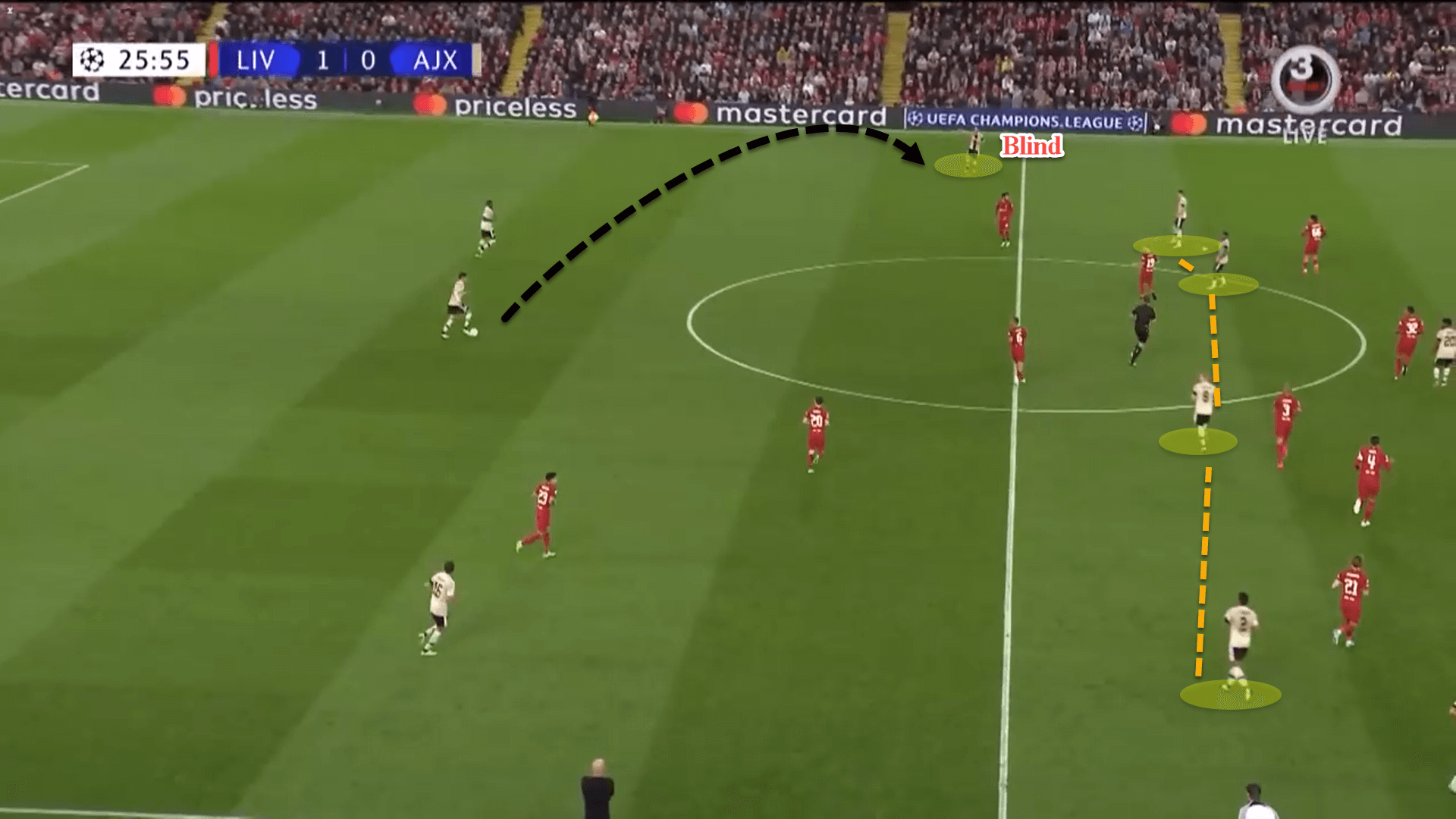
Here, Ajax are trying to break down Liverpool’s mid-block. The Reds are deploying a high line and are really compact between the lines of the midfield and defence.
Nevertheless, to combat this, Ajax have poured players into this space which means that Liverpool’s entire midfield and backline are occupied, essentially pinning them and narrowing the defensive block as a whole since the Reds did not want to allow the backline to reach these players.
This is a typical tactical ploy used by Schreuder to unlock a compact defensive structure. The reason it works is that the defending players are unable to step out to close down opponents in the wide areas because it leaves players free to receive in the pockets. Ajax scored from this very situation at Anfield.
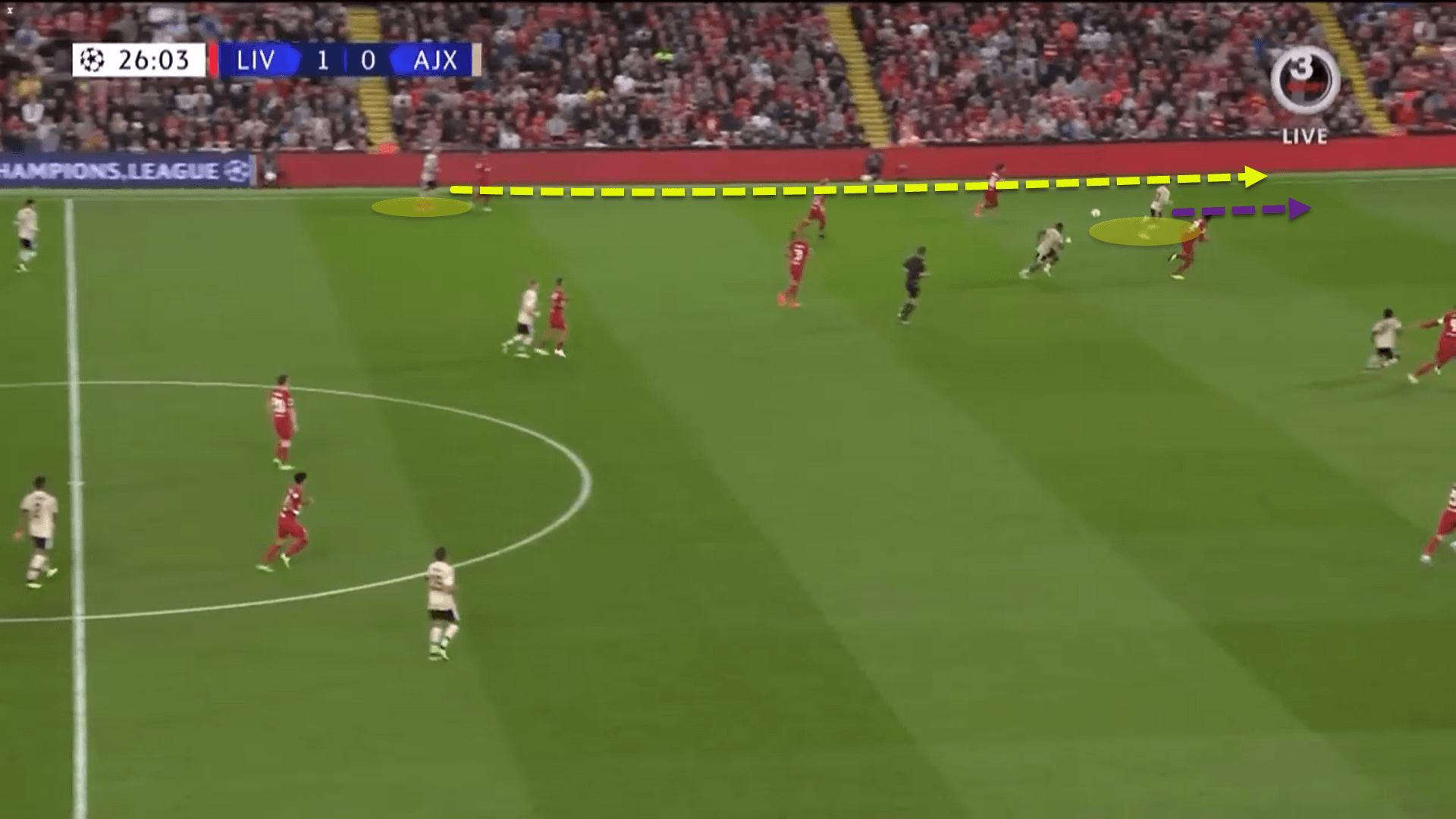
Due to Liverpool’s midfield and backline being pinned by Ajax’s positional occupation between the lines, left-back Daley Blind was free to receive the ball in space out wide.
By the time Liverpool’s defensive block had shifted across to apply pressure to Blind, the former Manchester United man had already clipped it down the channel towards Steven Berghuis.
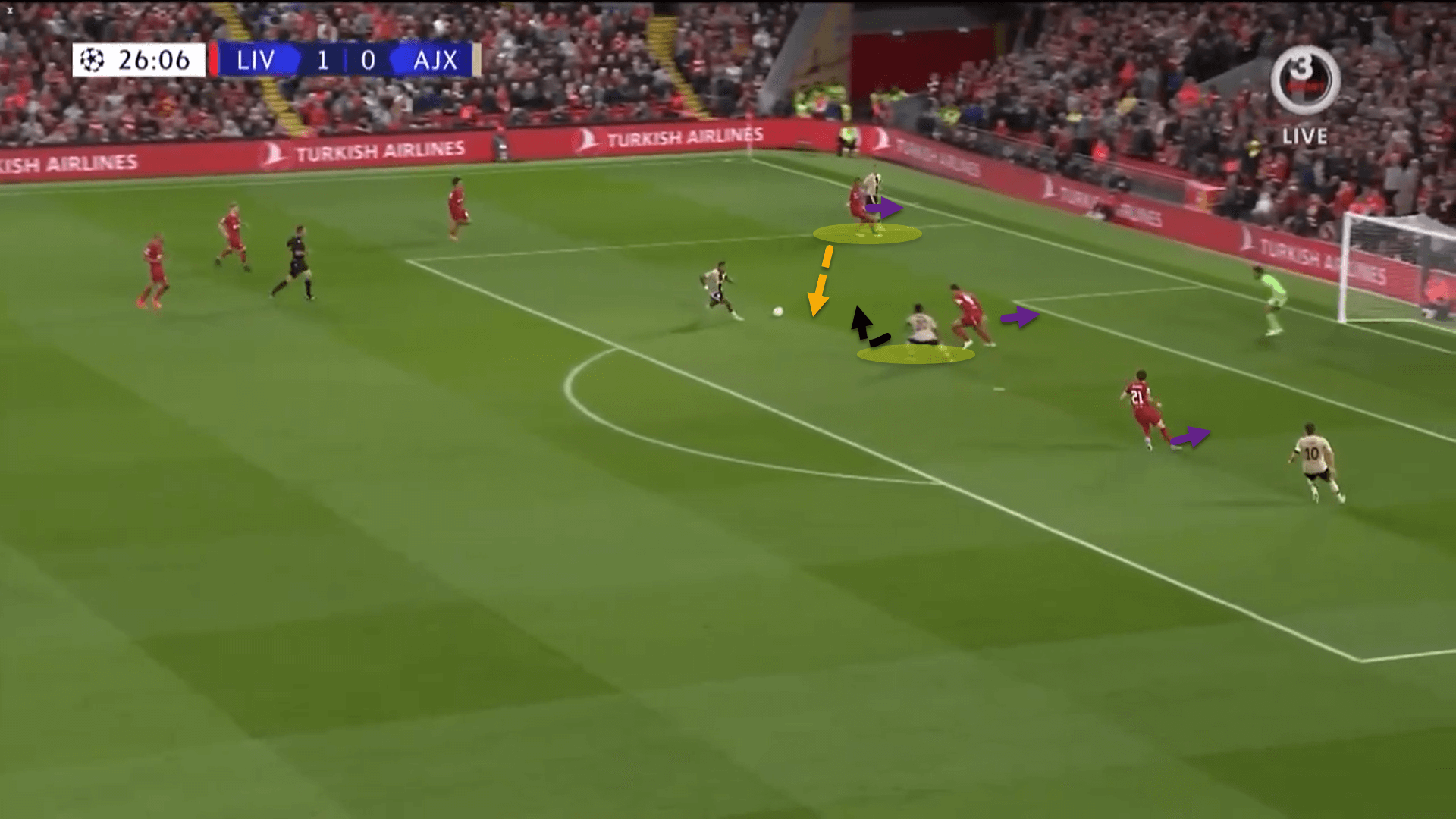
Given Trent Alexander-Arnold’s poor starting position, Berghuis was able to latch onto the through ball and receive in behind freely before crossing it low to Kudus in the box to score.

These cut-back crosses from the wide areas, a predominant feature of any side coached by Pep Guardiola, have become commonplace for Ajax this season.
What are the benefits? In essence, when the ball reaches the byline, the defending team naturally collapse as deep as possible. By cutting the ball back, attacking players can move in front of the defenders who can no longer step out because they are back-pedalling and can merely hope to block the shot.
In the above image, the ball was cut back to Kudus inside the area. Virgil van Dijk was unable to step out as he had been moving backwards and his body orientation was incorrect. Instead, he stood tall, hoping the ball would hit him. However, it didn’t, and Kudus wheeled away in celebration after smashing it in off the bar to equalise.
So far this season, across the Eredivisie and the Champions League, Ajax have averaged 19.56 crosses per game with an accuracy of 26.7 percent.
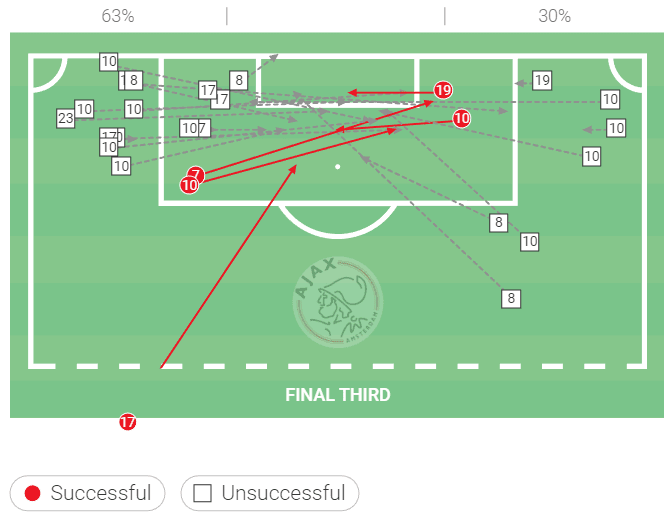
Quite a lot of these crosses into the box are cut-back balls, as can be seen from the 27 deliveries placed into the penalty area in a recent 5-0 hammering of Heerenveen.
These types of crosses suit Kudus up top. At just 5’10 and with a rather lean frame, the Ghana international is not the most imposing aerial presence. Nevertheless, Kudus’ movement inside the box is superb and so playing on the floor has aided him in becoming a menace in the area this season.
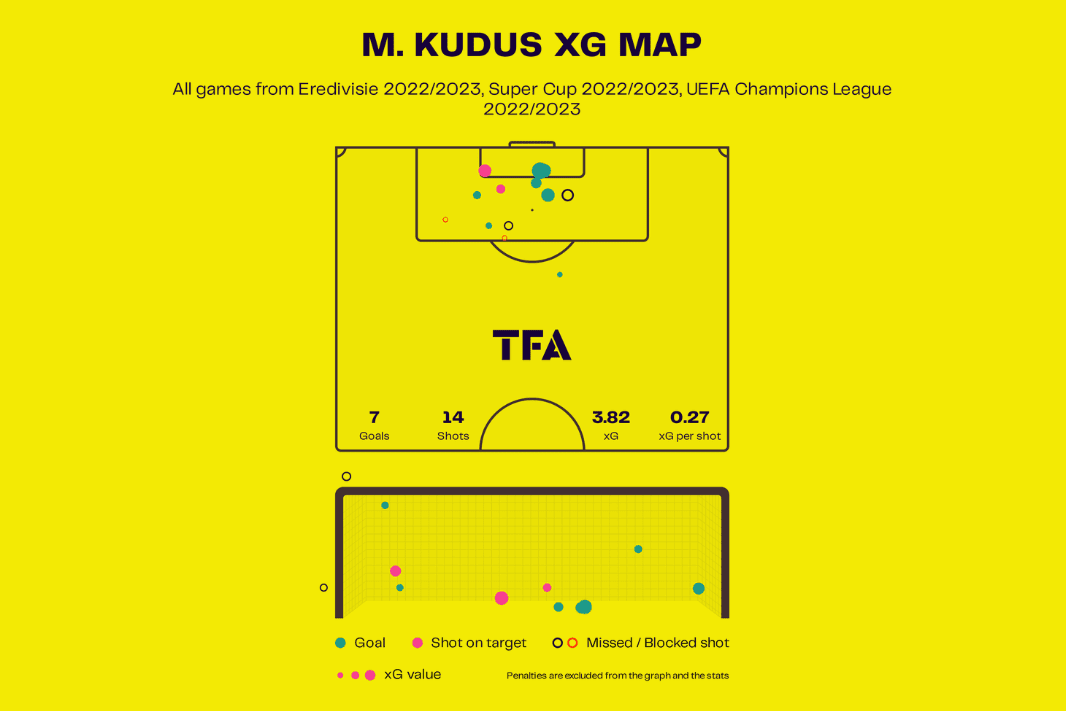
While playing scintillating stuff, Schreuder has still managed to maintain a pragmatic style at the Johan Cruyff Arena, leaning on the strengths of his players to create goalscoring opportunities.
Pressing
Now that we have completed our analysis of Ajax’s tactical set-up in possession under the new manager, let’s take a look at how the coach instructs his players to press high up the pitch.
Ajax are the highest pressing side in the Eredivisie this season. With a challenge intensity of 6.8, which measures how many defensive actions a team makes per minute of opposition possession, and a PPDA of 8.06, the Dutch giants like to get in the faces of their opponents.
Schreuder’s team employ a mixed system of a zonal and man-oriented press. Usually, the frontline press zonally while the midfield are the group tasked with going man-for-man against their opposite numbers.
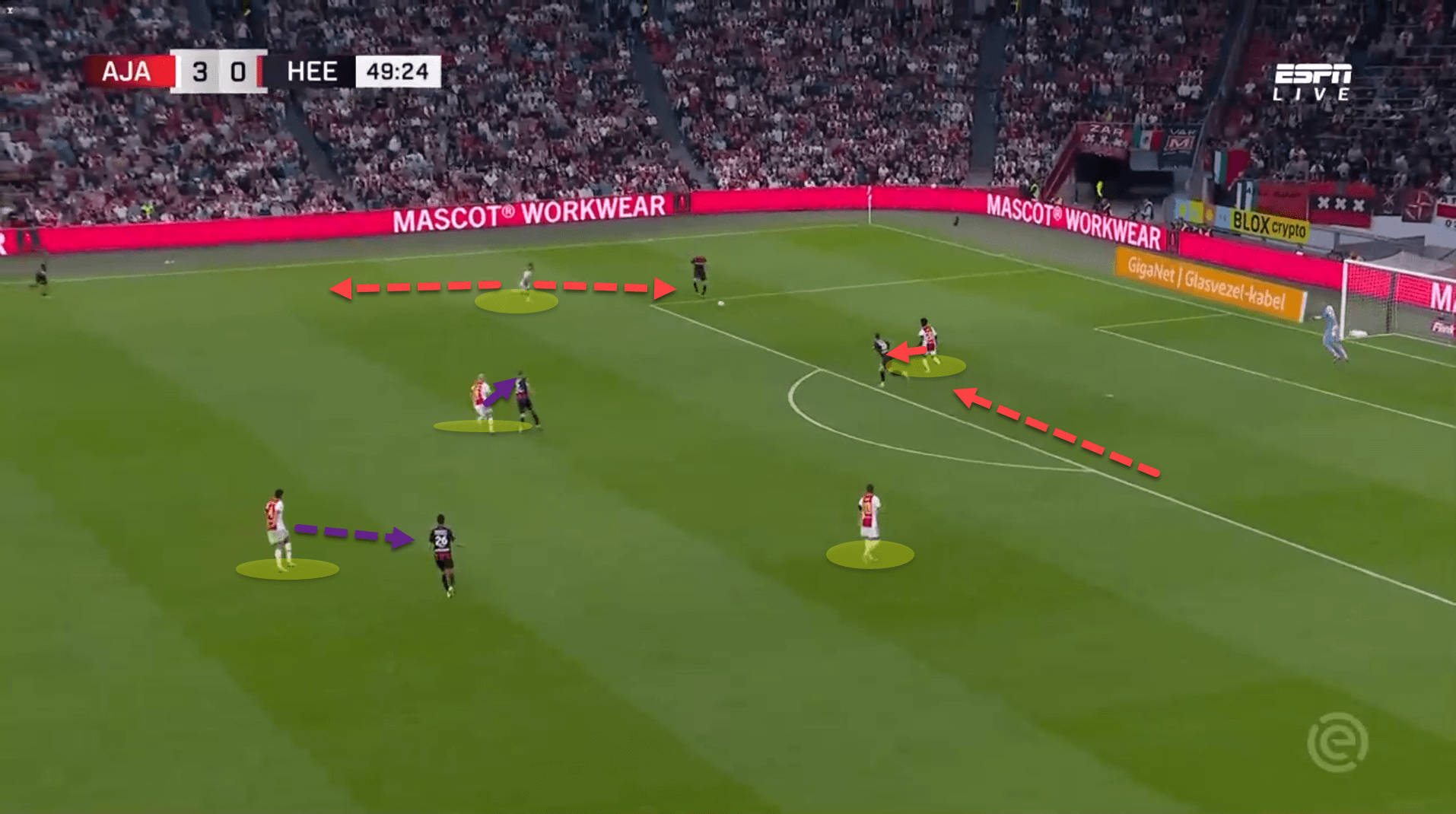
Ajax’s wingers and centre-forward must essentially mark two players at once. The wingers press the centre-backs and fullbacks while the centre-forward applies pressure on the central defenders and goalkeeper.
The objective is to force the opponents to play centrally where the midfield is being man-marked tightly. This can be seen from the above image.
The left winger is pressing Heerenveen’s centre-backs while cutting off the passing lane to the wide defender. Meanwhile, Kudus is pressing the same man, blocking off the ball-holder’s ability to play across to his defensive partner.
The only options available for the Heerenveen player are to either play long and risk losing the ball or make a risky pass into a marked midfielder.
The three midfielders’ man-oriented instructions are rather rigid, and each player must get tight to their assignment.
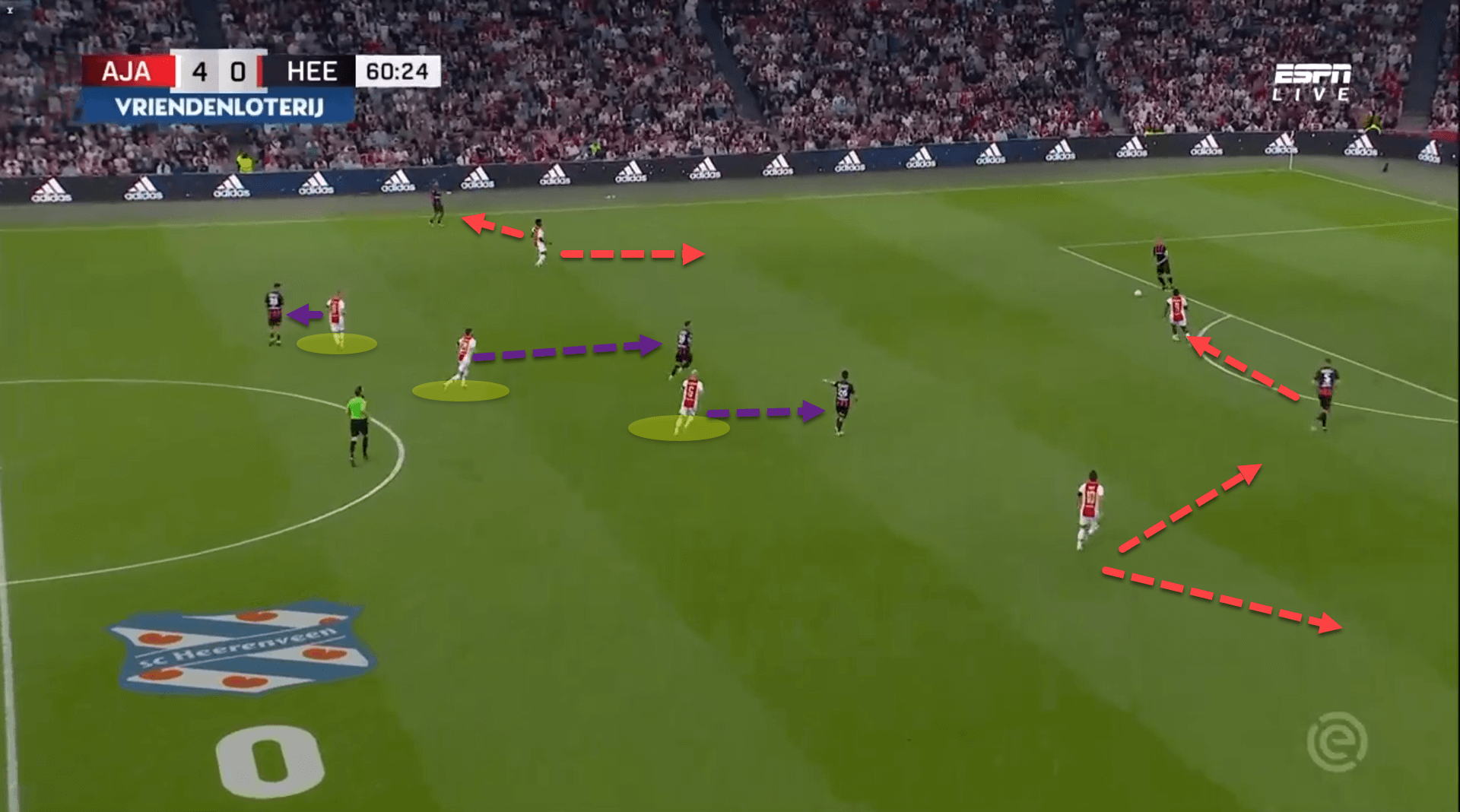
The problem that Ajax have had so far, which was massively exploited against Liverpool in the Champions League defeat at Anfield, is that more technically gifted midfielders are able to bypass this pressing by playing a first-time ball out wide.
During Ajax’s first high block at Liverpool, Thiago Alcantara showed the world why Schreuder’s press was permeable at the highest level.
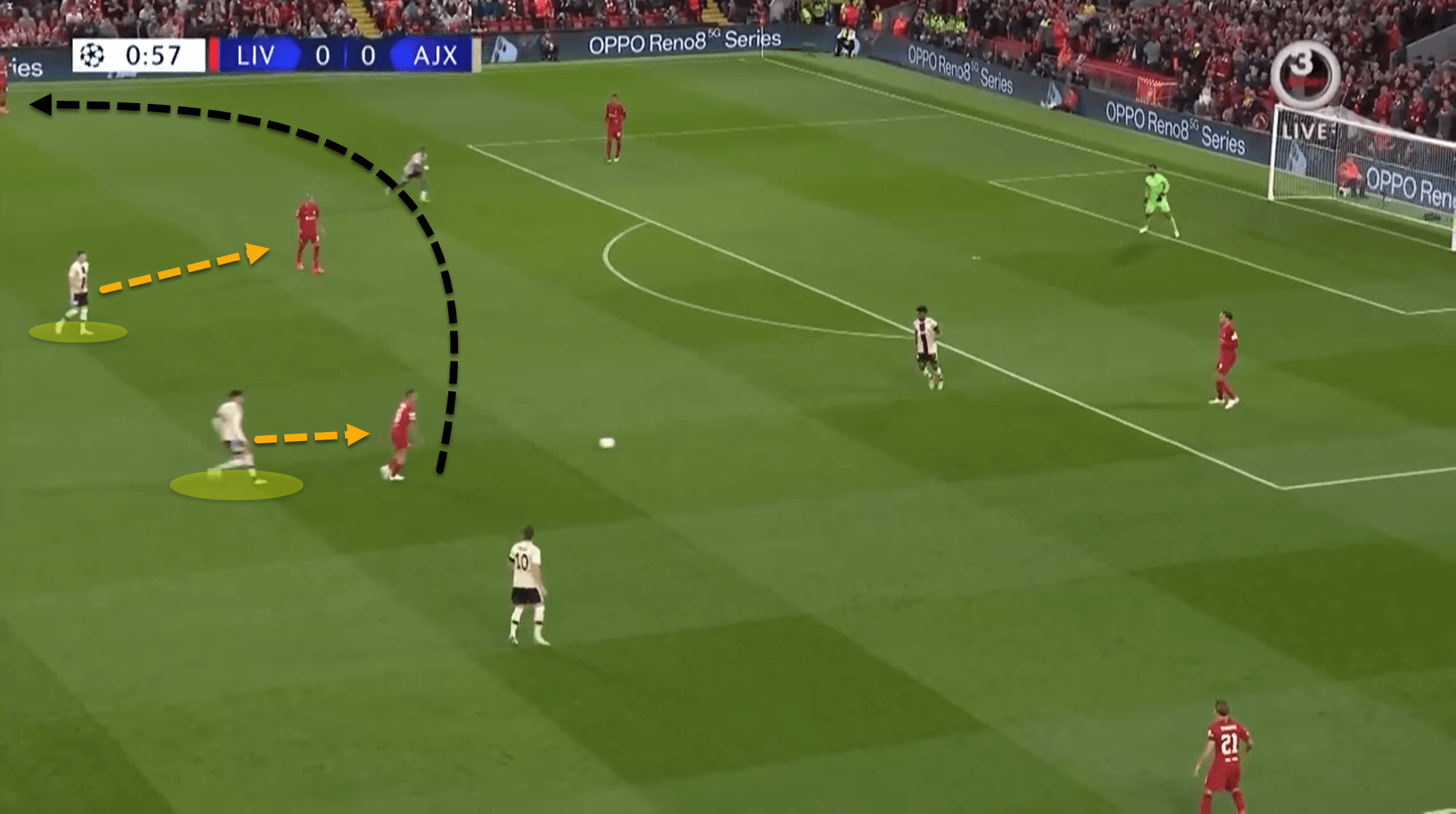
Having received the ball under pressure, Thiago lofted the ball out to Alexander-Arnold with ease which caused Ajax to scramble to recover into a deeper defensive block.
To avoid this in future, the fullbacks need to be ready to step up and close down their opposite numbers.
Conclusion
Ajax are a breath of fresh air in a sport dominated by the latest trends. Schreuder hasn’t ripped up the basic principles of modern football, but the Eredivisie club are certainly one of the most unique teams on the European stage.
It’s not always perfect though. Having lost their last two matches before the international break, Ajax need to work on their pressing and structure when defending long balls. However, watching centre-backs rotate positions with central midfielders brings a Total Football feeling to the side that Rinus Michels himself would have adored.






Comments